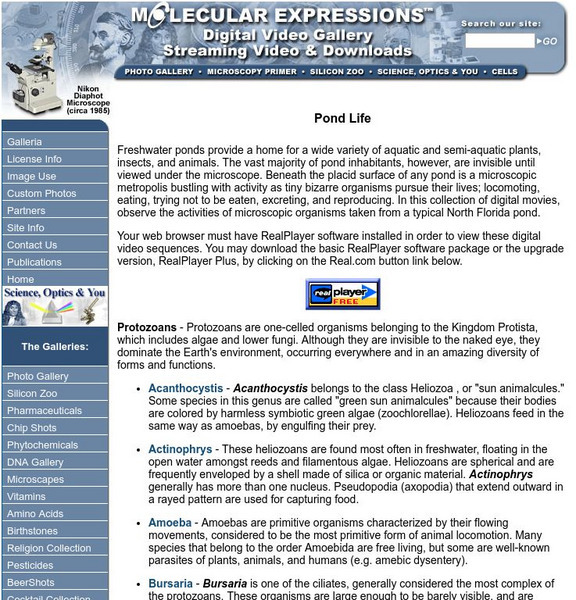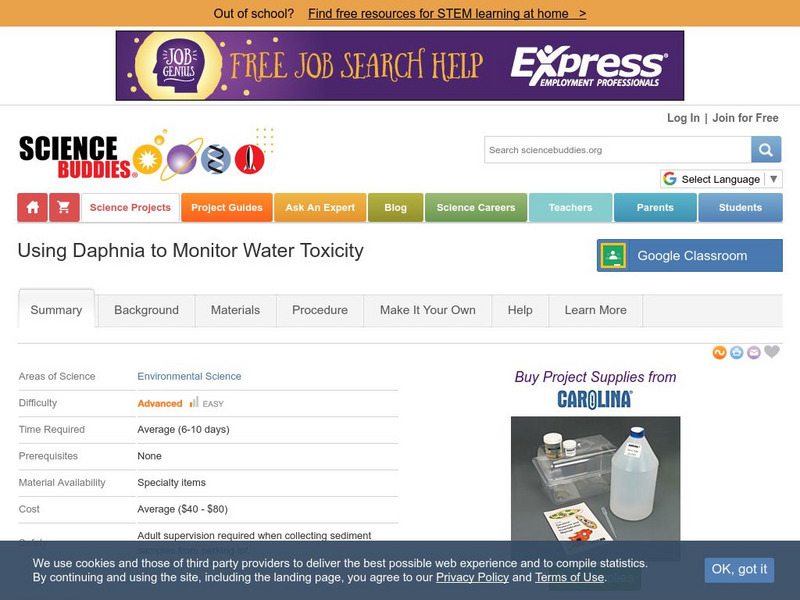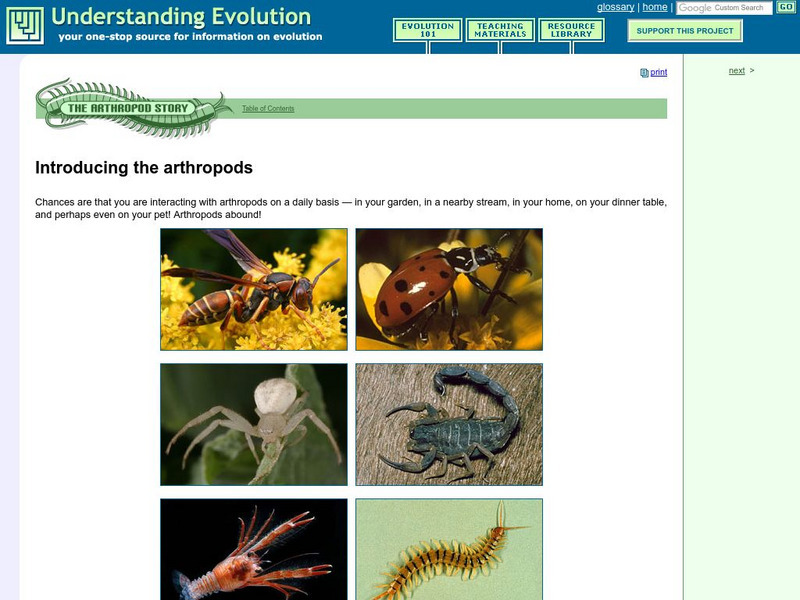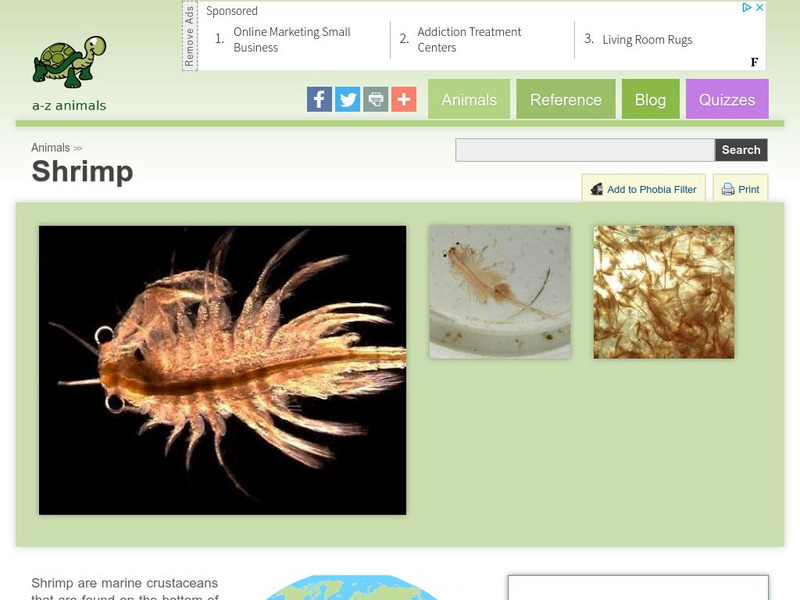Curated OER
Clip Art by Phillip Martin: Louisiana State Crustacean Crawfish
A clipart illustration by Phillip Martin titled "Louisiana State Crustacean - Crawfish."
Cornell University
Cornell University: The Crayfish Review
An excellent interactive site about the physical features of thier crayfish and their functions. This site was created for a college class, but can be used by all ages.
Morning Earth
All Lives Transform: Metamorphosis
The tutorial examines metamorphosis. Some topics explored are complete metamorphosis, incomplete metamorphosis, and crustacean metamorphosis. Definitions, examples, and pictures are on the concept are included.
Florida State University
Florida State University: Pond Life
Explore the microscopic organisms that live in the freshwater ponds with this video collection. These video clips feature unicellular organisms, from under the microscope, showing off their daily activities. Collection includes videos of...
Other
North Carolina Dept. Of Environment & Natural Resources: Kids' Educational Pages: Fish
A great site for kids wanting to learn more about fish and have some fun at the same time. It provides information about fish including food chain, fun fish facts, crustaceans, and shellfish: oysters, scallops, and clams. It also...
University of Michigan
Critter Catalog: Myriapods
This informative site provides a description of the characteristics of Myriapods. Local animals (southeastern Michigan) in these groups are then examined in further detail. Pictures and classification groupings are included in this site.
US Geological Survey
Usgs: Brine Shrimp
Vivid descriptions on the life cycle of brine shrimp and ecology within the Great Salt Lake.
Other
Using Acoustics to Monitor Krill Populations
Discussion and graphs discussing the importance of finding a large abundance of krill.
Natural History Museum
The Natural History Museum: Chinese Mitten Crab
Brief information about these crabs and the environmental problems which they may cause.
Environmental Education for Kids
Eek!: Alien Profile: Spiny Water Flea
Learn how the spiny water flea first came to North America, where it has spread to, how to identify it, how it is dispersed, the damage it causes, and what can be done to fight this invasive species.
Australian Broadcasting Corporation
Australian Broadcasting Corporation: News in Science: Antarctic Reveals Treasure Trove of Life
From ABC News in Science, Maggie Fox's article examines research connected to the various species of life discovered in the "dark waters around Antarctica." These findings include sponges, crustaceans, and new worms.
BiologyWise
Biology Wise: Facts About Daphnia (Water Fleas)
Describes the physical characteristics of Daphnia, their importance as a food source for freshwater fish, their diet, life cycle, and methods of reproduction. Offers tips for how to start and maintain a colony of Daphnia that can be used...
Science Buddies
Science Buddies: Using Daphnia to Monitor Water Toxicity
In a bioassay, a living organism serves as a detector for toxins-the same way canaries were used in coal mines to detect invisible toxic gases. In this project, water fleas (Daphnia magna), a freshwater crustacean, are used in a bioassay...
University of California
University of California Museum of Paleontology: The Arthropod Story
Go back in time to discover the evolutionary story of the arthropod and what this phylum of the animal kingdom looks like today.
University of California
Understanding Evolution: Introducing the Arthropods
This extensive look at the arthropod provides enough information for any budding naturalist, but will also be interesting to one casually interested in insects, spiders, and crustaceans. The pictures are outstanding, and the writing is...
Iowa State University
Iowa State University: Iowa Insect Information Notes Sowbugs and Pillbugs
Pillbugs may look like insects, but they're really crustaceans. This article describes them and their habitat, and describes what to do if they become a nuisance in the home.
TED Talks
Ted: Ted Ed: How Life Came to Land
This video explores arthropods, who first made the transition from water to land and who outnumber all terrestrial animals. [5:28] Followed by a short quiz and a list of additional resources to explore.
Regents of the University of Michigan
Animal Diversity Web: Rusty Crayfish
Comprehensive information about the rusty crayfish is presented, including the positive and negative economic impacts they have on humans. This page includes excellent photographs and detailed classification information.
PBS
Pbs: Nature: Crash: A Tale of Two Species
A documentary film about the horseshoe crab and its importance to a tiny shorebird known as the red knot bird. Human threats to the crab will directly threaten both the crab and the little bird who depends on it. Links to related topics...
University of Southern California
Structure of Matter: Animals
A slide show that demonstrates the development of physical structure in the animal world, moving from sponges through mammals.
Microscopy UK
Microscopy Uk: Rotifers and How to Find Them
Interesting discussion of rotifer anatomy, habitat, feeding habits, locomotion, and species.
A-Z Animals
A Z Animals: Animal Facts: Shrimp (Caridea)
Provides photographs and a fact card about shrimp. Discusses where they are found, the variety of species, diet, predators, reproduction, and their similarities and differences from prawns.
Other
Maryland State Symbols
Click on a word to find lots of information and a picture of each Maryland state symbol.
NOAA
Noaa: Annual Commercial Landings Statistics
The NOAA Fisheries offers this interactive statistics page to find out about the catches and value of various species of fish and crustaceans taken by commercial fisheries since 1950.
Other popular searches
- Marine Crustaceans
- Shells and Crustaceans
- Crustaceans of the Ocean
- Crustaceans Kindergarten
- Crustaceans 2nd Grade
- Crustaceans Animals





















